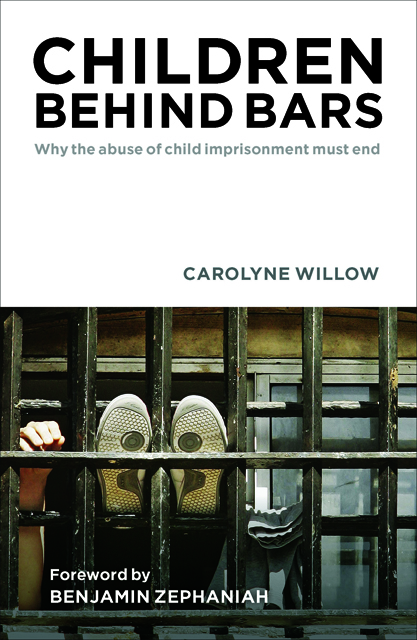Book contents
- Frontmatter
- Contents
- List of tables
- About the author
- Acknowledgements
- Preface
- Foreword by Benjamin Zephaniah
- one Introduction
- two ‘Things were not right at home’
- three ‘They just don’t listen’
- four ‘I think it’s quite like rape’
- five ‘I can’t breathe’
- six ‘What gives them the right to hit a child in the nose?’
- seven ‘We should be able to hug our families’
- eight ‘Every night I’m starving’
- nine Children were ‘given bags to urinate in’
- ten ‘The violence is unbelievable’
- eleven ‘Listen to the kids’
- twelve They shouldn’t be there
- Notes
- Index
four - ‘I think it’s quite like rape’
Published online by Cambridge University Press: 15 April 2023
- Frontmatter
- Contents
- List of tables
- About the author
- Acknowledgements
- Preface
- Foreword by Benjamin Zephaniah
- one Introduction
- two ‘Things were not right at home’
- three ‘They just don’t listen’
- four ‘I think it’s quite like rape’
- five ‘I can’t breathe’
- six ‘What gives them the right to hit a child in the nose?’
- seven ‘We should be able to hug our families’
- eight ‘Every night I’m starving’
- nine Children were ‘given bags to urinate in’
- ten ‘The violence is unbelievable’
- eleven ‘Listen to the kids’
- twelve They shouldn’t be there
- Notes
- Index
Summary
The National Society for the Prevention of Cruelty to Children (NSPCC) launched a national campaign in the summer of 2013 urging parents to teach their children the ‘underwear rule’, which is that no-one should be able to touch or look at a child without his or her underwear against the child’s wishes. Until very recently, thousands of children entering and leaving young offender institutions every year were systematically forced to take off their underwear and endure additional ‘random’ searches. The sociologist Erving Goffman referred to these kinds of institutional practices as ‘will-breaking ceremonies’. In an interview for this book, the former head of the Youth Justice Board (YJB), John Drew, voiced the potent message given to individual children when strip searching was rife: “‘You’re mine, I can do anything I like with you.’”
The routine strip searching of female prisoners ended in 2008, and girls held in women’s prisons benefited from this, but it took until 2011 for risk assessments to replace institutionalised undressing in secure training centres and 2014 for the same limitations to be applied to all young offender institutions. As with ‘stop and search’ police practices, close monitoring will be necessary to detect any discrimination in its continued use. But these latest developments should not detract attention from the abhorrent nature of the procedure itself, whether undertaken systematically or after a prison risk assessment. The law prohibits headteachers (or other authorised persons) from requiring a student to remove anything other than outer clothing when searching for offensive weapons. Prison rules allow officers to use force to remove children’s clothes – bizarrely, they are instructed to do this without causing the prisoner stress – and ‘safety scissors’ remain an authorised strip searching tool. At its least ugliest, children are made to stand in front of officers exposing the top and then the bottom half of their naked bodies while handing over their underwear for inspection. It can get much worse than this, however.
A decade before the launch of the NSPCC campaign, the then chief inspector of prisons gave a lecture on the role of inspection in protecting human rights, noting:
‘We have reported to at least two governors that, without their knowledge and against prison service orders, incoming prisoners were routinely squat-searched while stripped naked for strip-searching: and that included children.’
It’s safe to assume the practice continued.
- Type
- Chapter
- Information
- Children behind BarsWhy the Abuse of Child Imprisonment Must End, pp. 73 - 98Publisher: Bristol University PressPrint publication year: 2015



